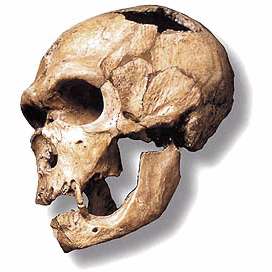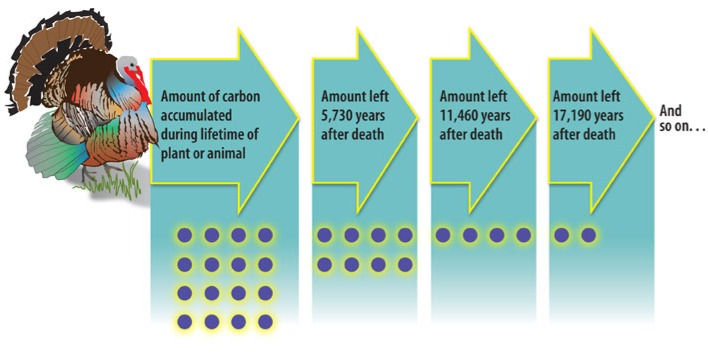
If you internet search "dating methods," you'll find over 20 ways to determine how old something is, but let's start with the basics. Relative dating and absolute dating are two very different things.
The law of superposition states that older rocks will be deeper in the earth than the rocks at the surface. Relative dating is the concept of not putting an exact age on something, but knowing what's older/younger comparatively. It's a method mostly used for rock formations.
Absolute dating is when you put that specific time frame or age on something and most organic matter fits into this category. If you can't date an organism absolutely, you can still relatively date it based on where in the rock layers you found it because the rock layers are consistent all over Earth. Most dating methods fit into one of those two categories.
Below is an example of the law of faunal succession, a pattern of fossils being found in the same rock layers around the entire world. Index fossils are an indicator of what rock layer you're looking at because they're only found in a single one.
Radiocarbon Dating
The process radiocarbon dating deals within the present to 50,000 years ago at maximum. All living things have carbon in them which makes them carbon-based. Carbon-14 is special kind of carbon that's also an isotope (unstable molecule).
Every time the isotope decays (falls apart), we can measure where it's at in the process. If you know where the beginning and the end is, you can look at the distances in the middle and measure how far away they are from either end.
Unstable molecules break down over time which is where the concept of a 'half-life' comes in. A half-life is how long it takes for half of the atom and in this case our isotope (Carbon-14) to decay. Carbon-14 has a half-life of 5,730 years which gives it a limit to how far back in time we can go looking at it. It's so precise and predictable that the methods are used worldwide. An isotope can't breakdown any quicker or slower than it does on its own.
Potassium-Argon Dating
Potassium-Argon dating has a half-life is 1.3 billion years and is generally used on rocks and minerals (which have a lot of potassium rather than carbon). Scientists like to use both relative and absolute dating methods to confirm an accurate age or find an age range of the object in question.

The beautiful thing about these dating methods and consistencies is that worldwide, scientists are able to build on these processes with their research. There have been scientists from all languages, studying the same objects in different places all over the world, getting the exact same and consistent results each time.
Scientists always correct each other and critique each other's work, so knowing that these methods of dating are consistent and have held up worldwide is a huge deal.
Sources:
Dr. Hannah Marsh, Professor of Anthropology, UCM
Dr. Jeff Yelton, Professor of Archaeology, UCM
Dr. Sally Zellers, Professor of Geological Sciences, UCM
"Everything Worth Knowing About Scientific Dating Methods" Discovery Magazine
"Dating Technoiques in Archaeology" Grahame Johnston - 27 May 2019








コメント